The Value of Current Sense of Place in Architectural Heritage Studies: A Systematic Review
Abstract
1. Introduction
2. Methodology
2.1. Data Search Process
2.2. Data Selection Criteria
- English is the global language in academia. In order to better understand the content of the articles, only articles whose publication language is English were included.
- Only journal articles were considered. Publications in other formats, such as books or conference papers, were excluded to maintain the focus on peer-reviewed journal research.
- The search covered articles published between 2020 and 2024, to reflect the latest trends and developments in the field.
- Duplicate articles were removed to ensure accuracy. The retrieved articles that met the inclusion criteria were downloaded, and EndNote was used to eliminate duplicates.
2.3. Data Analysis
3. Results
3.1. Research Overview
3.2. The Research Dimension
3.2.1. Cognitive Dimension Analysis
- Public perception and cultural value
- 2.
- Architectural form and place identity
- 3.
- Spatial perception and place identity
3.2.2. Emotional Dimension Analysis
- Religion and emotional belonging of architectural space
- 2.
- Architectural sensory experience and place attachment
- 3.
- Cultural memory and identity
- 4.
- Community emotional attachment and modernization challenges
3.2.3. Dynamic Dimension Analysis
- Modernization, urban renewal, and change in sense of place
- 2.
- The sense of place in war damage and heritage reconstruction
- 3.
- Shaping of digital technology, social media, and sense of place
- 4.
- Dynamic changes in cultural memory, identity, and architectural reuse
3.3. Function Analysis
3.3.1. Creation of Place Attachment
3.3.2. Place Identity and Formation
3.3.3. Cultural Identity
3.3.4. Placemaking and Narrative
3.3.5. The Construction of Memory and Belonging
3.4. Research Values
3.4.1. Promoting Sustainable Urban Culture Development
3.4.2. Architectural Heritage Protection of Urban Image
3.4.3. Architectural Heritage Promotes Local Brand Development
4. Discussion
4.1. Research Overview Analysis
4.1.1. Publication Timeline
4.1.2. Research Countries
4.1.3. Research Methods
4.1.4. Research Fields and Concepts
4.2. Research Dimension Analysis
4.3. Research Function Analysis
4.4. Research Value Analysis
5. Conclusions
Author Contributions
Funding
Data Availability Statement
Conflicts of Interest
References
- Elyasi, S.; Yamaçlı, R. Architectural sustainability with cultural heritage values. Cult. Herit. Sci. 2023, 4, 55–61. [Google Scholar] [CrossRef]
- Rahil, N.R.M.; Ghani, M.Z.A.; Sarkom, Y. Architectural heritage values and sense of place of Kampung Morten, Melaka. Plan. Malays. 2020, 18. [Google Scholar] [CrossRef]
- Liu, M.; Aoki, N.; Xu, S.B. Study on the Architectural Heritage Value from the View of Cultural Economics. Adv. Mater. Res. 2011, 243, 6489–6493. [Google Scholar] [CrossRef]
- Taher Tolou Del, M.S.; Sedghpour, B.S.; Tabrizi, S.K. The semantic conservation of architectural heritage: The missing values. Herit. Sci. 2020, 8, 70. [Google Scholar] [CrossRef]
- Brusaporci, S. The representation of architectural heritage in the digital age. In Encyclopedia of Information Science and Technology, 3rd ed.; IGI Global: Hershey, PA, USA, 2015; pp. 4195–4205. [Google Scholar]
- Łaszkiewicz, E.; Nowakowska, A.; Adamus, J. How Valuable is Architectural Heritage? Evaluating a Monument’s Perceived Value with the Use of Spatial Order Concept. SAGE Open 2022, 12, 21582440221142720. [Google Scholar] [CrossRef]
- Hashemnezhad, H.; Heidari, A.A.; Hoseini, P.M. Sense of place” and “place attachment. Int. J. Archit. Urban Dev. 2013, 3, 5–12. [Google Scholar]
- Najafi, M.; Shariff, M.K.B.M. The concept of place and sense of place in architectural studies. Int. J. Humanit. Soc. Sci. 2011, 5, 1054–1060. [Google Scholar]
- Sanger, M. Sense of place and education. J. Environ. Educ. 1997, 29, 4–8. [Google Scholar] [CrossRef]
- Relph, E. Sense of place. In Ten Geographic Ideas That Changed the World; Rutgers University Press: New Brunswick, NJ, USA, 1997; pp. 205–226. [Google Scholar]
- Kolodziejski, A. Connecting People and Place: Sense of Place and Local Action; The University of Manchester: Manchester, UK, 2014. [Google Scholar]
- Hay, R. Sense of place in developmental context. J. Environ. Psychol. 1998, 18, 5–29. [Google Scholar] [CrossRef]
- Shamai, S.; Ilatov, Z. Measuring sense of place: Methodological aspects. Tijdschr. Voor Econ. Soc. Geogr. 2005, 96, 467–476. [Google Scholar] [CrossRef]
- Kianicka, S.; Buchecker, M.; Hunziker, M.; Müller-Böker, U. Locals’ and tourists’ sense of place. Mt. Res. Dev. 2006, 26, 55–63. [Google Scholar] [CrossRef]
- Donohoe, J. Remembering places: A Phenomenological Study of the Relationship Between Memory and Place; Lexington Books: Lanham, MD, USA, 2014. [Google Scholar]
- Spence, C. Senses of place: Architectural design for the multisensory mind. Cogn. Res. Princ. Implic. 2020, 5, 46. [Google Scholar] [CrossRef]
- Tuan, Y.-F. Space and place: Humanistic perspective. In Philosophy in Geography; Springer: Berlin/Heidelberg, Germany, 1979; pp. 387–427. [Google Scholar]
- Low, S.M.; Altman, I. Place attachment: A conceptual inquiry. In Place Attachment; Springer: Berlin/Heidelberg, Germany, 1992; pp. 1–12. [Google Scholar]
- Massey, D. Space, Place and Gender; John Wiley & Sons: Hoboken, NJ, USA, 2013. [Google Scholar]
- Massey, D. A global sense of place. In Space, Place and Gender; Polity Press: Cambridge, UK, 1994. [Google Scholar]
- Seamon, D. A Geography of the Lifeworld (Routledge Revivals): Movement, Rest and Encounter; Routledge: London, UK, 2015. [Google Scholar]
- Dameria, C.; Akbar, R.; Indradjati, P.N.; Tjokropandojo, D.S. The relationship between residents’ sense of place and sustainable heritage behaviour in Semarang Old Town, Indonesia. Int. Rev. Spat. Plan. Sustain. Dev. 2022, 10, 24–42. [Google Scholar] [CrossRef] [PubMed]
- Cantillon, Z.; Baker, S. Ketch Yorlye Daun Paradise: Sense of place, heritage and belonging in Norfolk Island’s Kingston and Arthur’s Vale Historic Area. Thesis Elev. 2022, 172, 93–113. [Google Scholar] [CrossRef]
- Hussein, F.; Stephens, J.; Tiwari, R. Cultural memories and sense of place in historic urban landscapes: The case of Masrah Al Salam, the demolished theatre context in Alexandria, Egypt. Land 2020, 9, 264. [Google Scholar] [CrossRef]
- Mwale, K.P.; Lintonbon, J. Heritage, identity and the politics of representation in tribal spaces: An examination of architectural approaches in Mochudi, Botswana and Moruleng, South Africa. Int. J. Herit. Stud. 2020, 26, 281–298. [Google Scholar] [CrossRef]
- Nursanty, E.; Rusmiatmoko, D.; Husni, M.F.D. From Heritage to Identity: The Role of City Authenticity in Shaping Local Community Identity and Cultural Preservation. J. Archit. Hum. Exp. 2023, 1, 131–150. [Google Scholar] [CrossRef]
- Schofield, J.; Szymanski, R. Local Heritage, Global Context: Cultural Perspectives on Sense of Place; Ashgate Publishing, Ltd.: Farnham, UK, 2011. [Google Scholar]
- Karimi, K. Continuity and Change in Old Cities: An Analytical Investigation of the Spatial Structure in Iranian and English Historic Cities Before and After Modernization; University of London, University College London: London, UK, 1998. [Google Scholar]
- Mommaas, H. Modernity, postmodernity and the crisis of social modernization: A case study in urban fragmentation. Int. J. Urban Reg. Res. 1996, 20, 196–216. [Google Scholar] [CrossRef]
- Lee, T.; Bonaiuto, M. Theory of attachment and place attachment. In Psychological Theories for Environmental Issues; Aldershot: Hampshire, UK, 2003; Chapter 5; pp. 137–170. [Google Scholar]
- Jorgensen, B.S.; Stedman, R.C. A comparative analysis of predictors of sense of place dimensions: Attachment to, dependence on, and identification with lakeshore properties. J. Environ. Manag. 2006, 79, 316–327. [Google Scholar] [CrossRef]
- Lahoud, A.L. The role of cultural (architecture) factors in forging identity. Natl. Identities 2008, 10, 389–398. [Google Scholar] [CrossRef]
- Garg, K. Redefining Cultural Identity through Architecture. J. Emerg. Technol. Innov. Res. (JETIR) 2020, 7, 1445–1457. [Google Scholar]
- Salman, M. Sustainability and vernacular architecture: Rethinking what identity is. In Urban and Architectural Heritage Conservation Within Sustainability; IntechOpen: London, UK, 2018. [Google Scholar]
- Manzo, L.C.; Perkins, D.D. Finding common ground: The importance of place attachment to community participation and planning. J. Plan. Lit. 2006, 20, 335–350. [Google Scholar] [CrossRef]
- Lewicka, M. Place attachment, place identity, and place memory: Restoring the forgotten city past. J. Environ. Psychol. 2008, 28, 209–231. [Google Scholar] [CrossRef]
- Guthey, G.T.; Whiteman, G.; Elmes, M. Place and sense of place: Implications for organizational studies of sustainability. J. Manag. Inq. 2014, 23, 254–265. [Google Scholar] [CrossRef]
- Meyrowitz, J. No Sense of Place: The Impact of Electronic Media on Social Behavior; Oxford University Press: Oxford, UK, 1986. [Google Scholar]
- Moertiningsih, S.; Nurgandarum, D.; Nurfanty, O. Sense of place dynamics in historic city centre of Tangerang. Int. J. Sci. Technol. Res. 2020, 9, 2095–2099. [Google Scholar]
- Abizadeh, E. Evaluating the levels of the sense of place in historical monuments and its effects on the durability of historical-cultural heritage. Sociol. Cult. Art 2023, 4, 73–84. [Google Scholar]
- Bandarin, F.; Van Oers, R. The Historic Urban Landscape: Managing Heritage in an Urban Century; John Wiley & Sons: Hoboken, NJ, USA, 2012. [Google Scholar]
- Moher, D.; Liberati, A.; Tetzlaff, J.; Altman, D.G.; Prisma Group. Preferred reporting items for systematic reviews and meta-analyses: The PRISMA statement. Ann. Intern. Med. 2009, 151, 264–269. [Google Scholar] [CrossRef]
- Braun, V.; Clarke, V. Using thematic analysis in psychology. Qual. Res. Psychol. 2006, 3, 77–101. [Google Scholar] [CrossRef]
- Zwain, A.; Bahauddin, A. Identifying Formation of the Traditional Courtyard Shop Houses Interiors: Case Study in George Town, Penang. Akademika 2020, 90, 103–114. [Google Scholar]
- Ye, X. Making post-colonial place identity: The regeneration of the St Lazarus neighbourhood, Macau. Open House Int. 2021, 46, 114–129. [Google Scholar] [CrossRef]
- Rashid, M.; Khoo, C.K.; Kaljevic, S.; Pancholi, S. Presence of the Past: Digital Narrative of the Dennys Lascelles Concrete Wool Store; Geelong, Australia. Remote Sens. 2021, 13, 1395. [Google Scholar] [CrossRef]
- Kádár, B.; Klaniczay, J. Branding Built Heritage through Cultural Urban Festivals: An Instagram Analysis Related to Sustainable Co-Creation, in Budapest. Sustainability 2022, 14, 5020. [Google Scholar] [CrossRef]
- Zhu, X.Y.; Chiou, S.C. A Study on the Sustainable Development of Historic District Landscapes Based on Place Attachment among Tourists: A Case Study of Taiping Old Street, Taiwan. Sustainability 2022, 14, 11755. [Google Scholar] [CrossRef]
- Noobanjong, K.; Louhapensang, C. Baan Fai Rim Ping: A haptic approach to the phenomenon of genius loci by a riverside residence in Thailand. J. Asian Archit. Build. Eng. 2023, 22, 355–373. [Google Scholar] [CrossRef]
- Robson, E. Assessing the Social Values of Built Heritage: Participatory Methods as Ways of Knowing. Architecture 2023, 3, 428–445. [Google Scholar] [CrossRef]
- Fouad, S.S.; Eldin, S.S. Public Perception Influence on the Reshaping Urban Heritage: A Case Study of Port Said Historic Quarters. Space Cult. 2023, 26, 579–597. [Google Scholar] [CrossRef]
- Janowski, M.; Janowska, A.; Nadolny, A.; Mohammadi, M. Architecture of Polish Tatars-Local Identity and Heritage. Int. J. Conserv. Sci. 2023, 14, 231–250. [Google Scholar] [CrossRef]
- Chizzoniti, D.G.; Lolli, T. Urban Morphology, Identity, Heritage, and Reconstruction Processes in Middle East Post-War Scenarios: The Case of Mosul Old City. Land 2023, 12, 2140. [Google Scholar] [CrossRef]
- Noaime, E.; Alnaim, M.M. Examining the symbolic dimension of Aleppo’s historical landmarks. Alex. Eng. J. 2023, 78, 292–305. [Google Scholar] [CrossRef]
- Zhao, X.; Leng, T.; Wang, Y.; Chao, S. An enlightening sacrifice: Discovering an anonymous building on the campus of Nanjing University in China. J. Asian Archit. Build. Eng. 2023, 22, 875–895. [Google Scholar] [CrossRef]
- Zwain, A.; Bahauddin, A. Malacca’s “Straits Chinese traditional courtyard eclectic style shophouses”: Facades’ architectural design elements through place identity. J. Cult. Herit. Manag. Sustain. Dev. 2023, 13, 837–855. [Google Scholar] [CrossRef]
- Galimberti, C. Re-imagining the Port Heritage of Rosario: From Grain Storage Silos to the Museum of Contemporary Art of Rosario (Argentina). DISEGNARECON 2023, 16, 21.1–21.13. [Google Scholar]
- Thirumaran, K.; Mohammadi, Z.; Azzali, S.; Eijdenberg, E.L.; Donough-Tan, G. Transformed landscapes, tourist sentiments: The place making narrative of a luxury heritage hotel in Singapore. J. Herit. Tour. 2023, 18, 243–264. [Google Scholar] [CrossRef]
- Phua, J.S.; Tan, K.K.H. Local perspectives on the cultural significance of rejuvenated heritage shophouses in George Town, Penang. Archnet-IJAR Int. J. Archit. Res. 2023, 17, 43–69. [Google Scholar] [CrossRef]
- Zou, M.; Bahauddin, A. The Creation of “Sacred Place” through the “Sense of Place” of the Daci’en Wooden Buddhist Temple, Xi’an, China. Buildings 2024, 14, 481. [Google Scholar] [CrossRef]
- Nevejan, M.; Gantois, G. Restoring broken journeys in the framework of urban reconstruction after a disaster: The Ypres case. Archit._MPS 2024, 29, 3. [Google Scholar] [CrossRef]
- Wei, X.; Zhou, H.; Joshi, N.; Tang, M. Beyond Preservation: Heritage as an Educational Practice Process at 141 Neil Road, Singapore. Buildings 2024, 14, 1225. [Google Scholar] [CrossRef]
- Chen, H.; Yang, Y.; Zhao, D.; Zhang, L.; Tang, Z.; Tian, J.; Shen, T.; Yin, Y. Social Cluster and Heritage Memory: A Study on the Space Perception of Zhaozhou Basin Horse Caravan Vernacular Architecture. Buildings 2024, 14, 2405. [Google Scholar] [CrossRef]
- Scannell, L.; Gifford, R. Defining place attachment: A tripartite organizing framework. J. Environ. Psychol. 2010, 30, 1–10. [Google Scholar] [CrossRef]
- Pietrostefani, E.; Holman, N. The politics of conservation planning: A comparative study of urban heritage making in the Global North and the Global South. Prog. Plan. 2021, 152, 100505. [Google Scholar] [CrossRef]
- Labadi, S.; Giliberto, F.; Rosetti, I.; Shetabi, L.; Yildirim, E. Heritage and the sustainable development goals: Policy guidance for heritage and development actors. Int. J. Herit. Stud. 2021. [Google Scholar]
- Luo, N.; Ibrahim, R.; Abidin, S.Z. Transformation of children’s paintings into public art to improve public spaces and enhance people’s happiness. Int. J. Environ. Res. Public Health 2022, 19, 16780. [Google Scholar] [CrossRef] [PubMed]
- Wen, Y.; Haider, S.A.; Boukhris, M. Preserving the past, nurturing the future: A systematic literature review on the conservation and revitalization of Chinese historical town environments during modernization. Front. Environ. Sci. 2023, 11, 1114697. [Google Scholar] [CrossRef]
- Hanna, S.; Rowley, J.; Keegan, B. Place and destination branding: A review and conceptual mapping of the domain. Eur. Manag. Rev. 2021, 18, 105–117. [Google Scholar] [CrossRef]
- Cuomo, M.T.; Tortora, D.; Foroudi, P.; Giordano, A.; Festa, G.; Metallo, G. Digital transformation and tourist experience co-design: Big social data for planning cultural tourism. Technol. Forecast. Soc. Change 2021, 162, 120345. [Google Scholar] [CrossRef]
- Parlato, M.C.; Valenti, F.; Porto, S.M. Sustainable promotion of traditional rural buildings as built heritage attractions: A heritage interpretation methodology applied in south Italy. Sustainability 2022, 14, 16206. [Google Scholar] [CrossRef]
- Zelenskaya, E.; Elkanova, E. Designing place brand architecture: The potential of a sub-brands strategy. J. Prod. Brand Manag. 2021, 30, 167–179. [Google Scholar] [CrossRef]
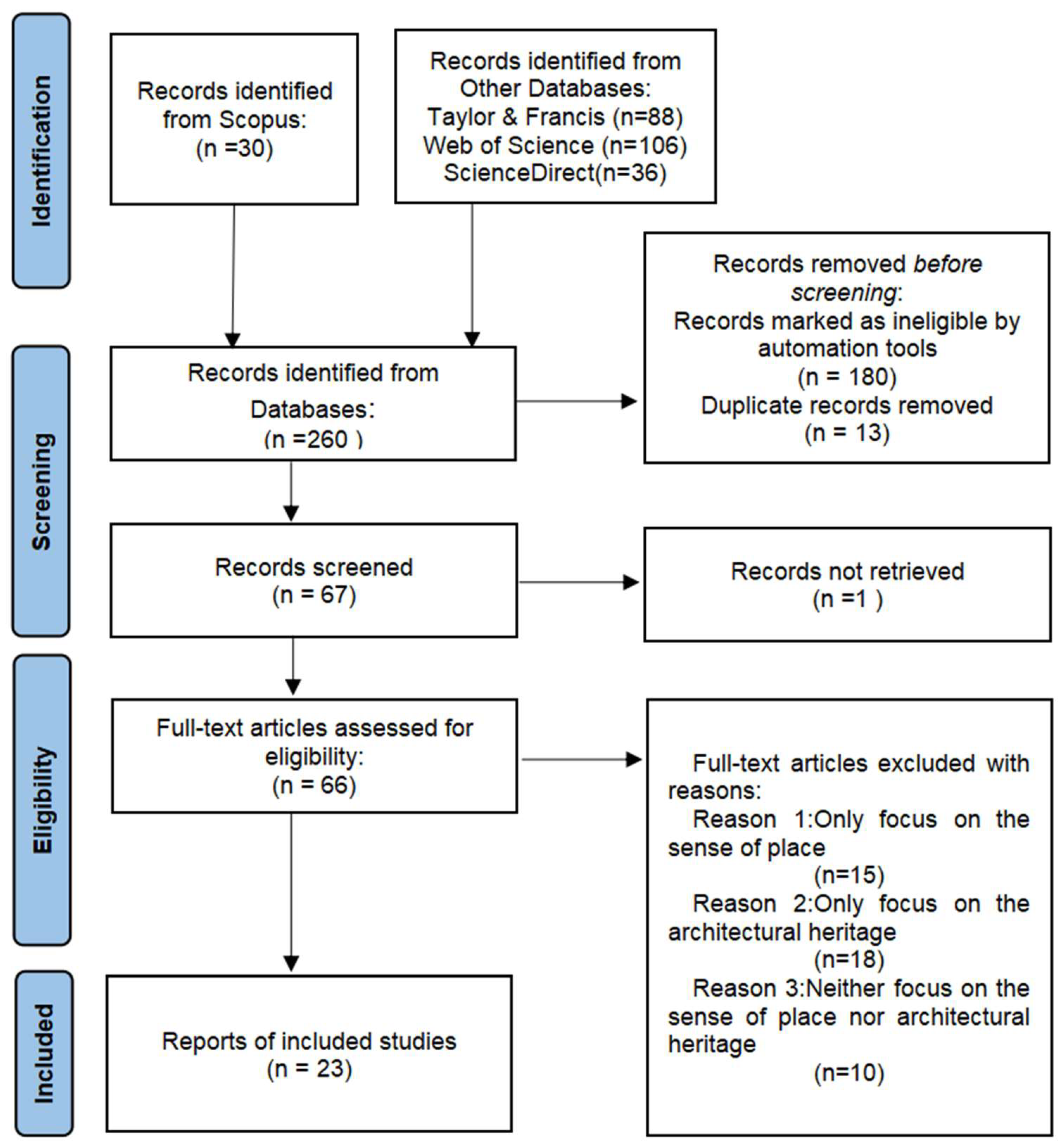
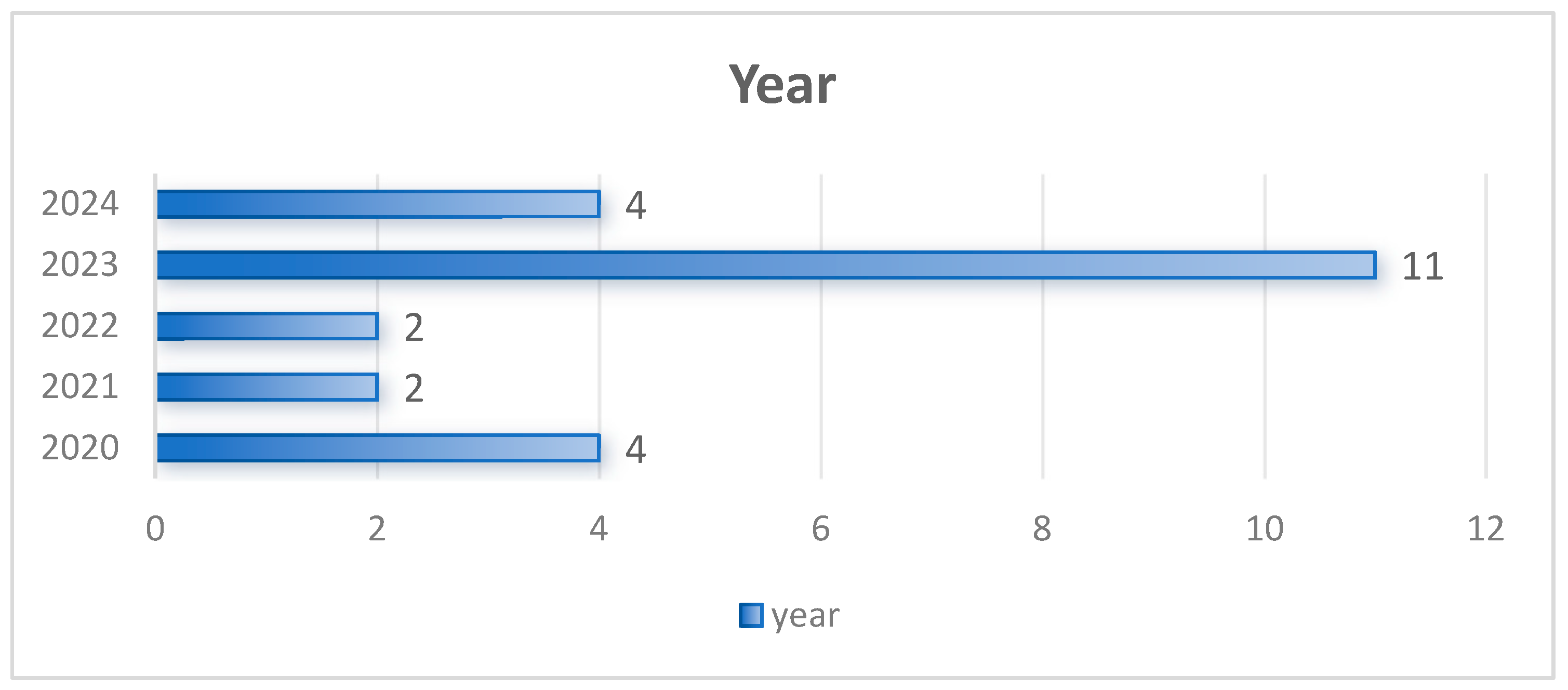
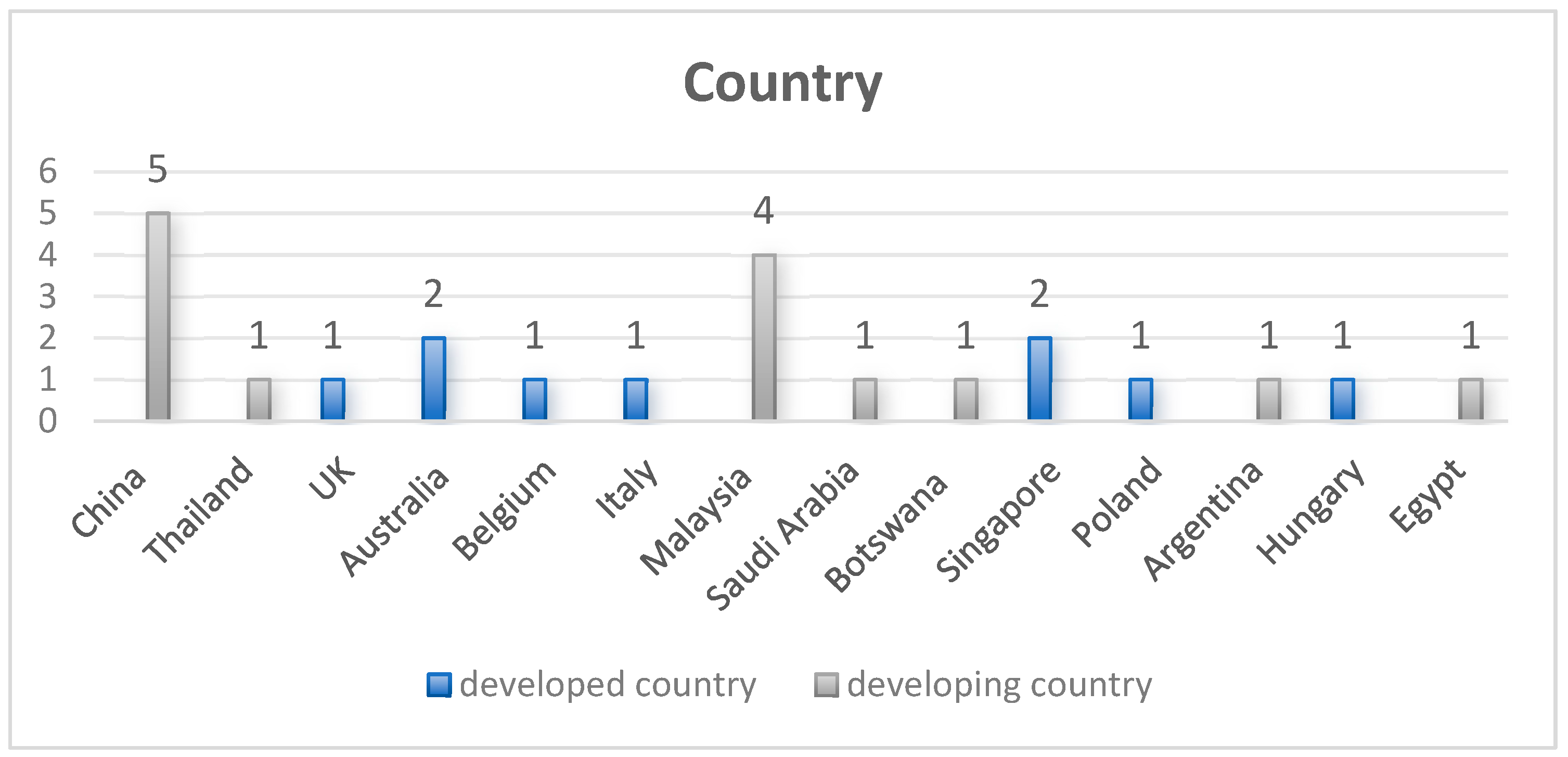
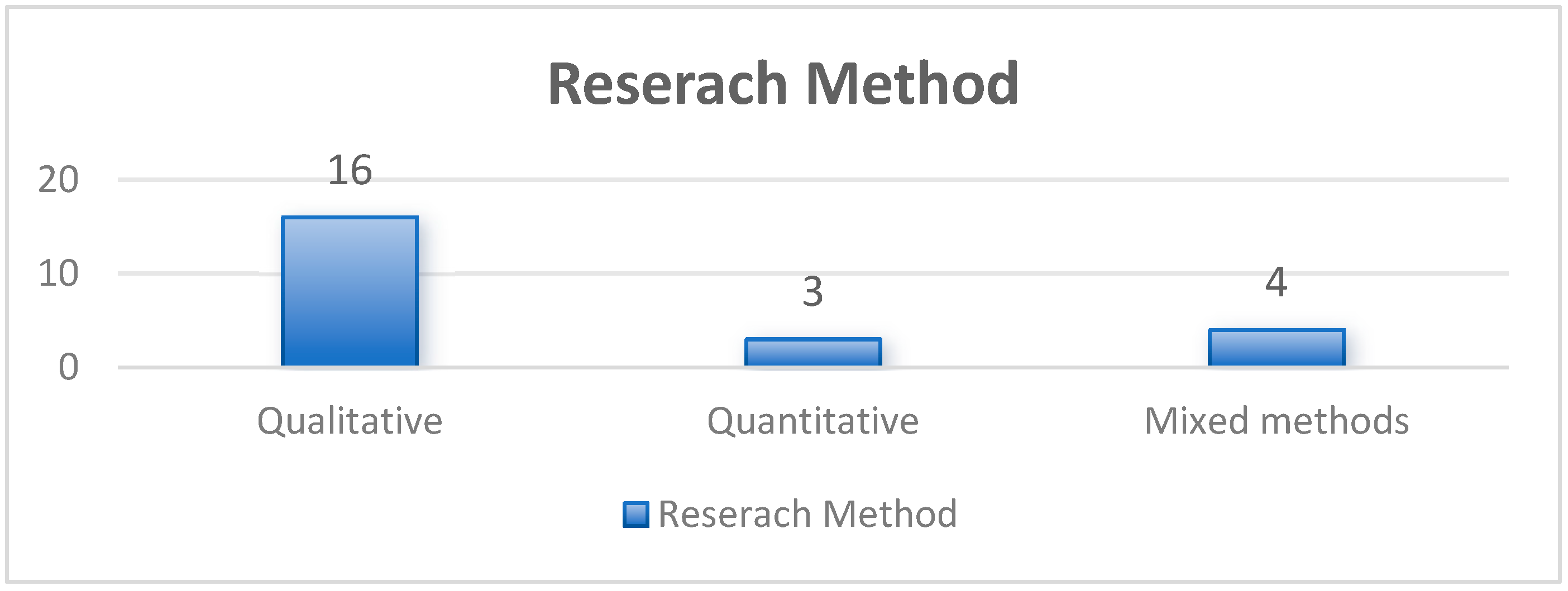
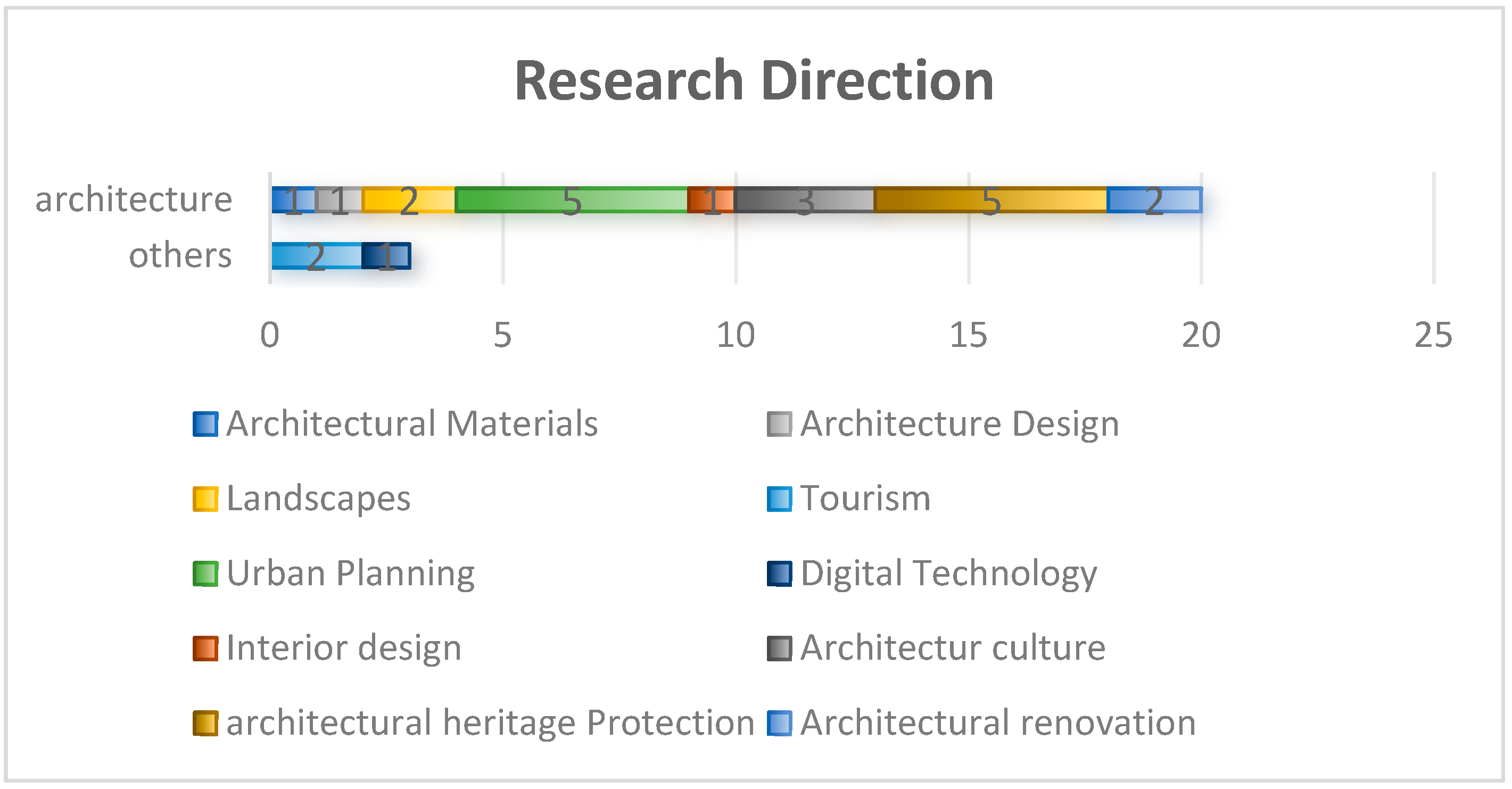
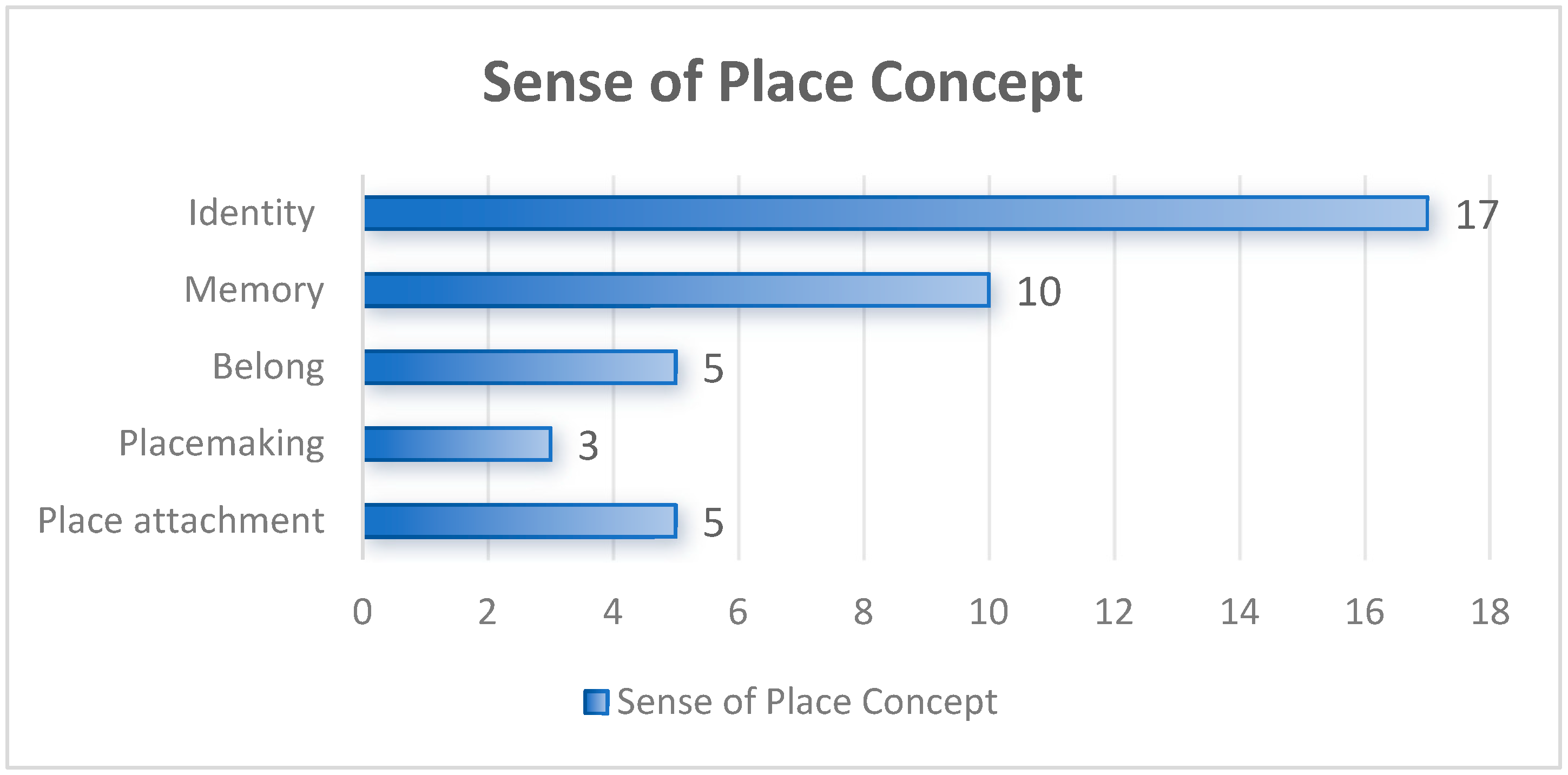
| Step | Stage | Research Criteria | Result | |
|---|---|---|---|---|
| Included | Excluded | |||
| 1 | Identification | Enter the set search terms in the title, abstract, and keywords | 260 | - |
| 2 | Screening | Records after exclusion: Language: English Article type: Article Publication time: 2020–2024 Remove duplicates | 193 | 67 |
| Exclude articles that are irrelevant or weakly relevant to the research question | - | 1 | ||
| 3 | Included | - | 66 | - |
| No | Reference | Title | Country | Research Direction (Types) | Methodology | Research Concept |
|---|---|---|---|---|---|---|
| 1 | [44] | Identifying Formation of the Traditional Courtyard Shop Houses Interiors: Case Study in George Town, Penang | Malaysia | Interior design (traditional courtyard shop house) | Qualitative | Place identity Cultural identity Identity formation |
| 2 | [25] | Heritage, Identity and the Politics of Representation in Tribal Spaces: an Examination of Architectural Approaches in Mochudi, Botswana and Moruleng, South Africa | Botswana | Architecture culture (colonial architecture) | Qualitative | Identity construction Cultural identity |
| 3 | [2] | Architectural Heritage Values and Sense of Place of Kampung Morten, Melaka | Malaysia | Architectural heritage protection (dwellings) | Mixed methods | Sense of place Place attachment |
| 4 | [24] | Cultural Memories and Sense of Place in Historic Urban Landscapes: The Case of Masrah Al Salam, the Demolished Theatre Context in Alexandria, Egypt | Australia | Historic urban landscapes (theatre) | Qualitative | Place attachment Cultural Memory Place identity Sense of place |
| 5 | [45] | Making Post-colonial Place Identity: The regeneration of The St Lazarus Neighbourhood, Macau | China | Urban planning (commercial historic district) | Qualitative | Place identity |
| 6 | [46] | Presence of the Past: Digital Narrative of the Dennys Lascelles Concrete Wool Store; Geelong, Australia | Australia | Digital technology (the Dennys Lascelles Concrete wool store) | Qualitative | Cultural memory Placemaking Collective memory Sense of place |
| 7 | [47] | Branding Built Heritage through Cultural Urban Festivals: An Instagram Analysis Related to Sustainable Co-Creation, in Budapest | Hungary | Tourism (Urban heritage building) | Quantitative | Placemaking Place attachment |
| 8 | [48] | A Study on the Sustainable Development of Historic District Landscapes Based on Place Attachment among Tourists: A Case Study of Taiping Old Street, Taiwan | China | Landscape (commercial historic district) | Quantitative | Place attachment |
| 9 | [49] | Baan Fai Rim Ping: a Haptic Approach to the Phenomenon of Genius loci by a Riverside Residence in Thailand | Thailand | Architecture design (residence) | Qualitative | Belonging Sense of place |
| 10 | [50] | Assessing the Social Values of Built Heritage: Participatory Methods as Ways of Knowing | UK | Architectural heritage protection (social housing) | Qualitative | Belonging |
| 11 | [51] | Public Perception Influence on the Reshaping Urban Heritage: A Case Study of Port Said Historic Quarters | Egypt | Urban planning (historic district) | Mixed methods | Sense of belonging Cultural identity |
| 12 | [52] | Architecture of Polish Tatars-Local Identity and Heritage | Poland | Architectural and culture (religious building) | Qualitative | Local identity |
| 13 | [53] | Urban Morphology, Identity, Heritage, and Reconstruction Processes in Middle East Post-War Scenarios: The Case of Mosul Old City | Italy | Urban planning (reconstruction of the Old City) | Qualitative | Memory and reconstruction Identity |
| 14 | [54] | Examining the Symbolic Dimension of Aleppo’s Historical Landmarks | Saudi Arabia | Urban planning (historic district) | Qualitative | Inhabitant belonging Urban identity Sense of place |
| 15 | [55] | An enlightening Sacrifice: Discovering an Anonymous Building on the Campus of Nanjing University in China | China | Architectural heritage protection (campus building) | Qualitative | Sense of place |
| 16 | [56] | Malacca’s “Straits Chinese Traditional Courtyard Eclectic Style Shophouses”: Facades’ Architectural Design Elements through Place Identity | Malaysia | Building renovation (shophouse) | Qualitative | Place identity |
| 17 | [57] | Re-imagining the Port Heritage of Rosario: From Grain Storage Silos to the Museum of Contemporary Art of Rosario (Argentina) | Argentina | Architectural renovation (museum) | Qualitative | Memory Identity |
| 18 | [58] | Transformed Landscapes, Tourist sentiments: the Place making Narrative of a Luxury Heritage Hotel in Singapore | Singapore | Tourism (luxury heritage hotels) | Mixed methods | Placemaking |
| 19 | [59] | Local Perspectives on the Cultural Significance of Rejuvenated Heritage Shophouses in George Town, Penang | Malaysia | Architecture culture (shophouses) | Mixed methods | Sense of place Belong |
| 20 | [60] | The Creation of “Sacred Place” through the “Sense of Place” of the Daci’en Wooden Buddhist Temple, Xi’an, China | China | Architectural materials (religious building) | Qualitative | Cultural identity Collective memory Sense of place |
| 21 | [61] | Restoring Broken Journeys in the Framework of Urban Reconstruction Urban Planning After a Disaster: the Ypres Case | Belgium | Urban planning (reconstruction of the Old City) | Qualitative | Place attachment Spatial memory War memory |
| 22 | [62] | Beyond Preservation: Heritage as an Educational Practice Process at 141 Neil Road, Singapore | Singapore | Architectural heritage protection (townhouse) | Qualitative | Identity Memory Sense of place |
| 23 | [63] | Social Cluster and Heritage Memory: A Study on the Space Perception of Zhaozhou Basin Horse Caravan Vernacular Architecture | China | Architectural heritage protection (vernacular architecture) | Quantitative | Local identity Social memory Place identity |
| Themes | Sub-Themes | Article Coding | Research Content |
|---|---|---|---|
| Cognitive Dimension | Public perception and cultural value | 11, 15 | Studies on architectural heritage history, spatial organization, architectural forms, and public heritage perception reveal the value of heritage and its social impact. |
| Architectural form and place identity | 16 | Explores how architectural design elements shape local characteristics and examines their influence on place identity. | |
| Space perception and place identity | 23 | Applies theories of spatial perception in architectural heritage research to explore the relationship between space and sense of place. | |
| Emotional Dimension | Spiritual experience and emotional belonging of religious buildings | 20 | Investigates how religious architecture creates a sacred atmosphere, enhancing a sense of belonging, religious sentiment, and personal memory. |
| Architectural sensory experience and place attachment | 8, 9, 10 | Explores how architectural design, through space, materials, and sensory experiences, shapes place attachment, belonging, and identity. | |
| Cultural memory and identity | 1, 4, 14 | Examines the role of cultural memory in shaping sense of place, emphasizing how iconic buildings can strengthen residents’ identity, place attachment, and sense of belonging. | |
| Community emotional attachment and modernization challenge | 3 | Analyzes the emotional attachment of communities to architectural heritage and the challenges modernity presents to place identity. | |
| Dynamic Dimension | Modernization, urban renewal, and change in sense of place | 2, 5, 18, 19 | Explores how modernization, urban renewal, and market competition affect sense of place, and analyzes their impact on community identity, identity politics, and residents’ adaptive strategies. |
| Sense of place in war destruction and heritage reconstruction | 13, 21 | Studies how war disrupts and reconstructs sense of place, exploring the roles of historical memory, symbolic spaces, and social resilience. | |
| Digital technology, social media, and the shaping of a sense of place | 6, 7 | Investigates how social media, digital modeling, and digital storytelling shape and spread sense of place. | |
| The dynamic changes in cultural memory, identity, and architectural reuse | 12, 17, 22 | Explores how cultural memory, identity, and adaptive reuse of architecture shape sense of place, reflecting the transformation of historical heritage in contemporary society, and illustrating how sense of place evolves with social and cultural changes. |
Disclaimer/Publisher’s Note: The statements, opinions and data contained in all publications are solely those of the individual author(s) and contributor(s) and not of MDPI and/or the editor(s). MDPI and/or the editor(s) disclaim responsibility for any injury to people or property resulting from any ideas, methods, instructions or products referred to in the content. |
© 2025 by the authors. Licensee MDPI, Basel, Switzerland. This article is an open access article distributed under the terms and conditions of the Creative Commons Attribution (CC BY) license (https://creativecommons.org/licenses/by/4.0/).
Share and Cite
Bo, L.; Abdul Rani, M.F. The Value of Current Sense of Place in Architectural Heritage Studies: A Systematic Review. Buildings 2025, 15, 903. https://doi.org/10.3390/buildings15060903
Bo L, Abdul Rani MF. The Value of Current Sense of Place in Architectural Heritage Studies: A Systematic Review. Buildings. 2025; 15(6):903. https://doi.org/10.3390/buildings15060903
Chicago/Turabian StyleBo, Lianghua, and Muhammad Faizal Abdul Rani. 2025. "The Value of Current Sense of Place in Architectural Heritage Studies: A Systematic Review" Buildings 15, no. 6: 903. https://doi.org/10.3390/buildings15060903
APA StyleBo, L., & Abdul Rani, M. F. (2025). The Value of Current Sense of Place in Architectural Heritage Studies: A Systematic Review. Buildings, 15(6), 903. https://doi.org/10.3390/buildings15060903






